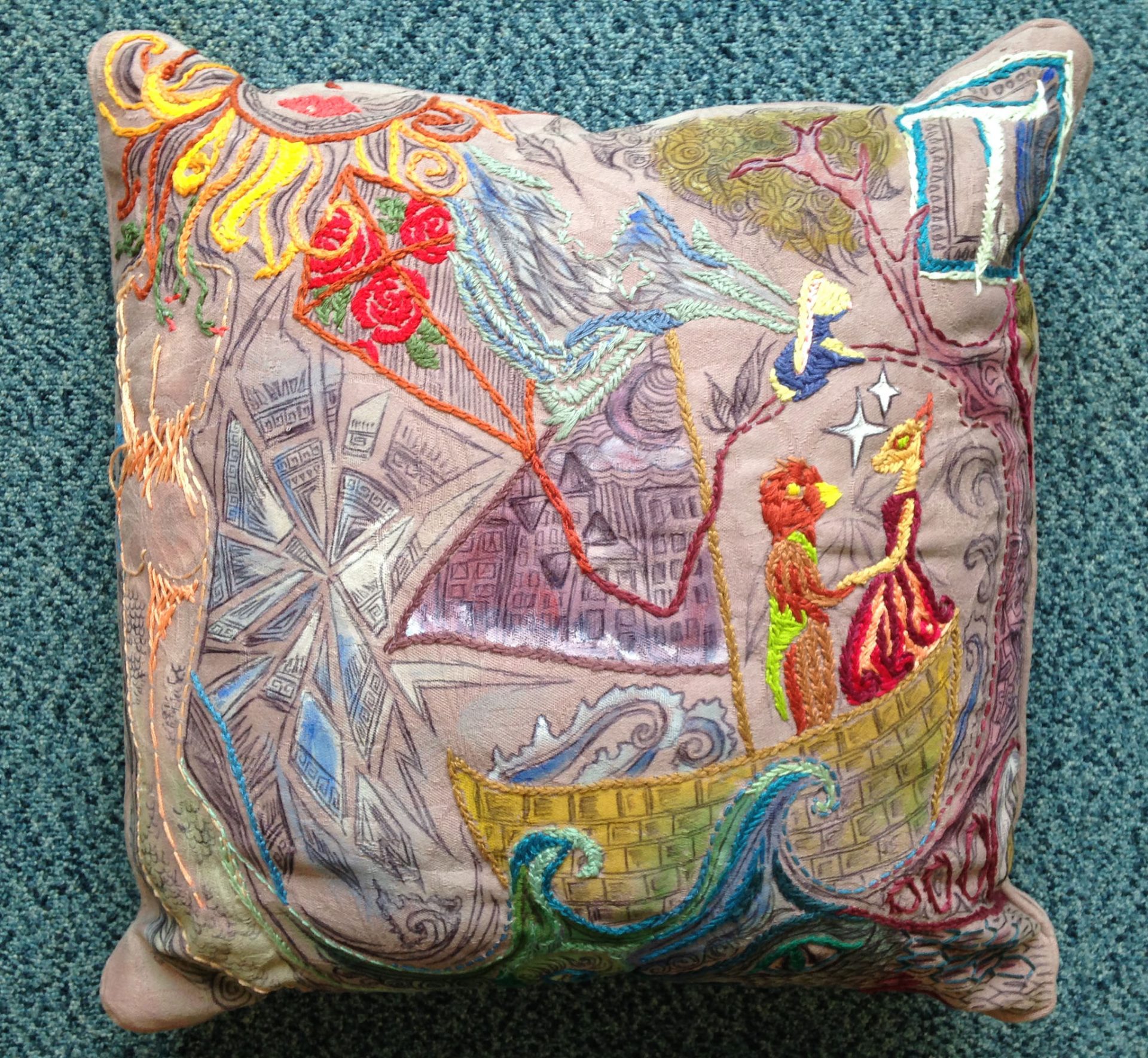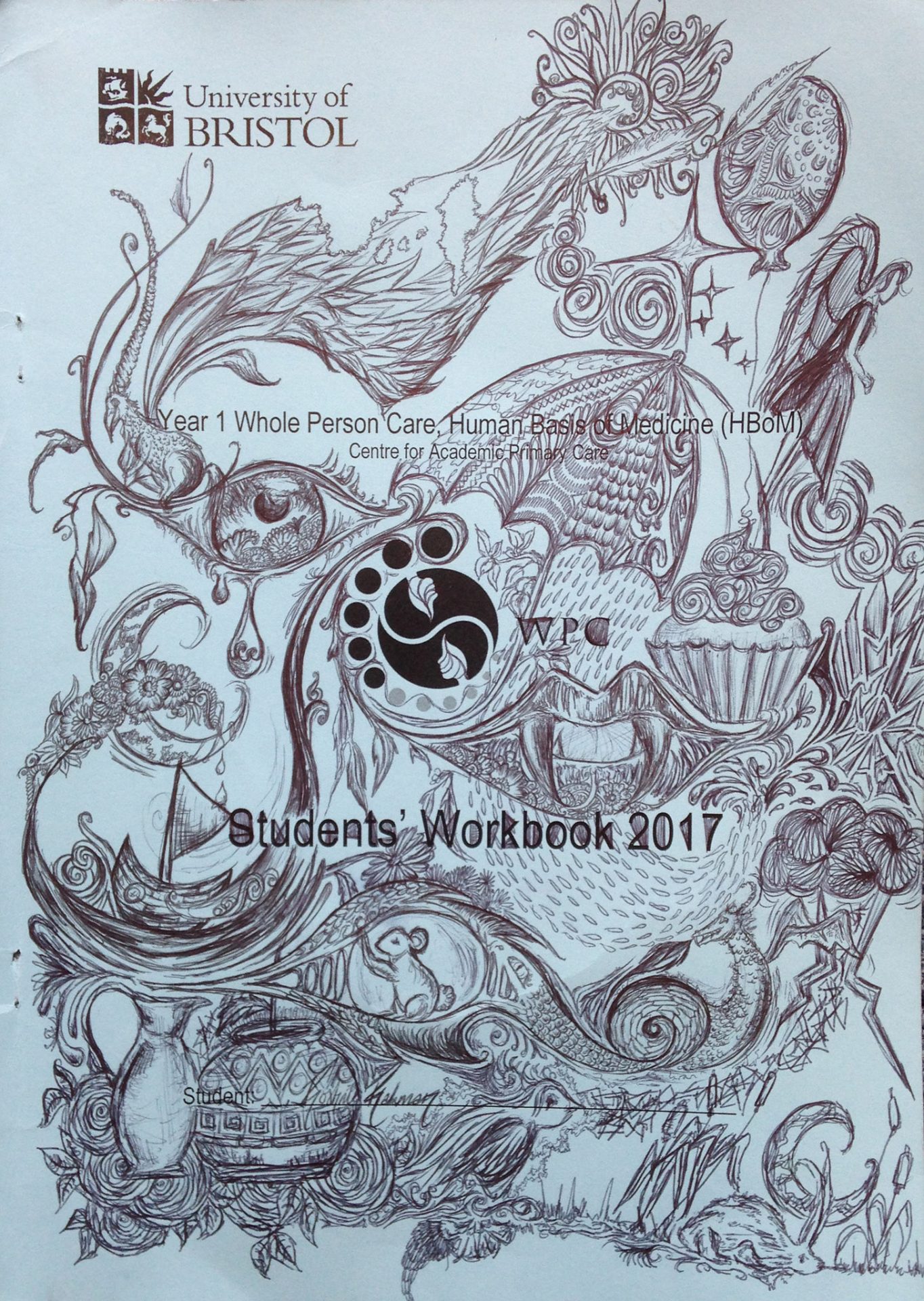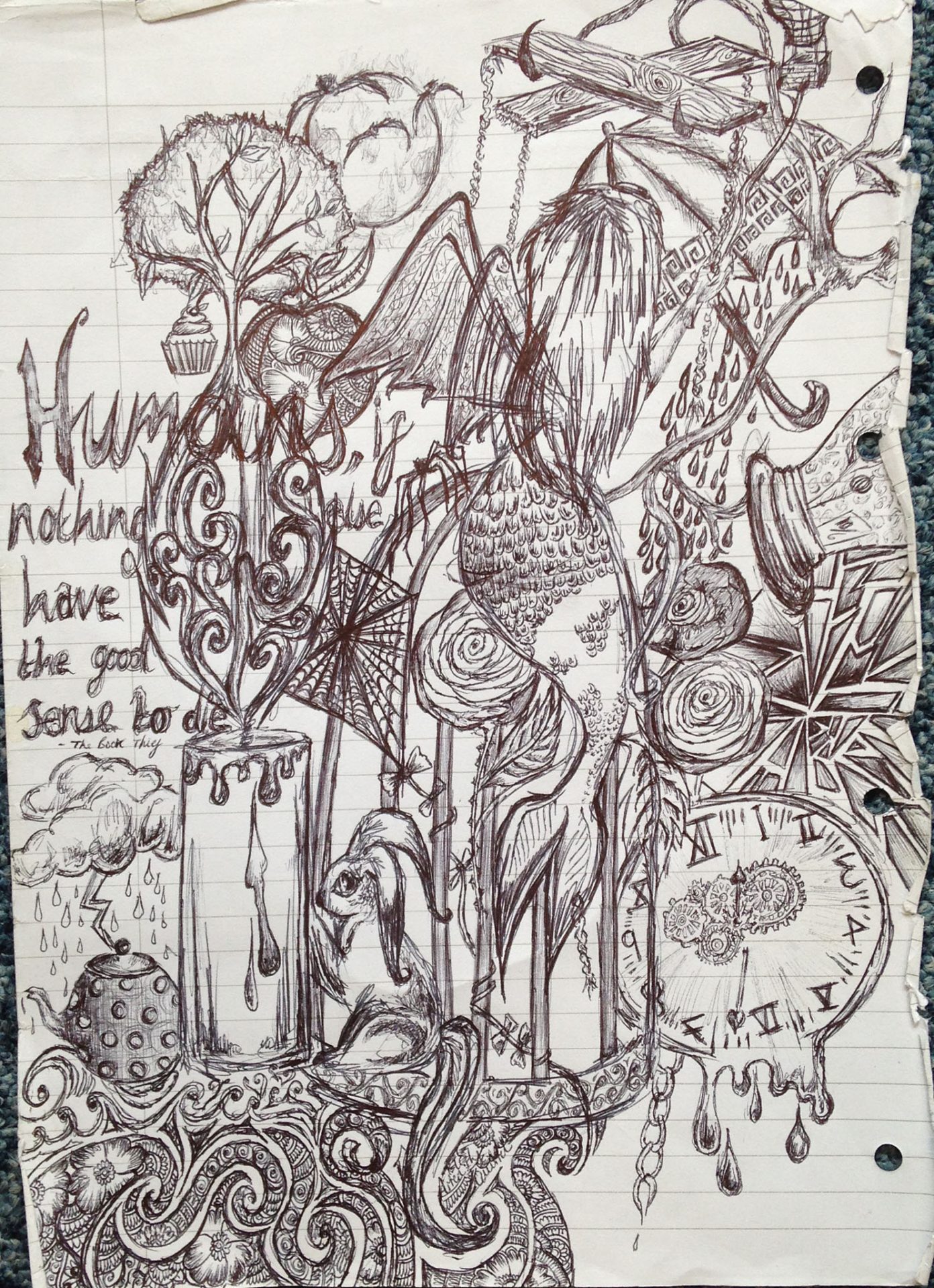In One Hand a Paintbrush, the Other a Pen
The numerous presentations of my ‘doodling’, over several course booklets, (see images 2 & 3 above) is my way of having a clear and tidy mind. Although this may seem counterintuitive, I feel that these doodles actually allow me to be less distracted.
For me personally, doodling fills the need to have some form of a consistent and convenient creative outlet (although this first year does generously provide some creative opportunities.) Ultimately I have found that drawing has helped to improve my concentration, allow me to recall information more easily and also stop me daydreaming. I suppose, in my case, the drawing could be described somewhat as very basic coping mechanism, for the sometimes overwhelming and vast amounts of information we face through this course.
I used embroidery to translate the scribbled images from my imagination onto the pillowcase because of the therapeutic effects of sewing, as it is something which can be done very conveniently at almost any place. This therapeutic benefit along with the obvious link from a pillow to the idea of sleep draws towards the theme of self healing and self awareness. Art therapy is just one of many ways that we can help ourselves to feel better along with routine habits such as sleeping for a certain number of hours each night.
I believe that although I have discussed the themes of mind and body and self‐care in a way more specific to myself, many others could gain something from exploring their own often forgotten creative abilities. The idea of using art to communicate the parts of ourselves that we might otherwise suppress, ignore or forget about, should be encouraged more widely. This would be specifically worthwhile in patient healthcare. Art therapy is happening in some GP Practices, but in my opinion – not enough.
Doodling or drawing for the purpose of therapy is not a matter of aesthetic sophistication but more so a case of personal satisfaction. We must remember that art is in fact just another form of speech - not unlike the way some patients might require a translator or the way in which doctors might use metaphors to help young children understand what is going on. We are often advised, when feeling confused, upset or even angry, to write about our emotions but why stop there? For some individuals it just may be the case that that the power of imagery may be equal, if not greater in strength, to the power of words?



I love the art style of this – very Alice-in-Wonderland-esque. The colours used as well as the business of it really are representative of what it feels like when your trying to tidy your thoughts.
Abso loved your entry – really made me laugh. Such a great use of a workbook. Your words too were wise and humble. Keep doodling!